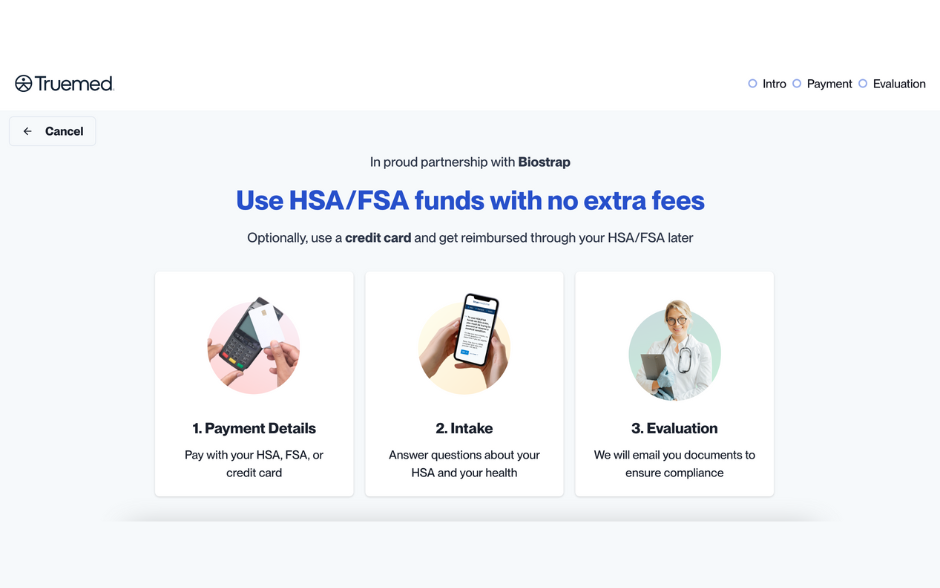If you’re looking to get fit, you’ve probably heard about heart rate. The last time you took your heart rate though may have been in grade school as part of your PE class. For others, monitoring heart rate is a daily task that helps them understand the effectiveness of training programs and overall health.
Whether you’re an experienced athlete or someone who’s just looking for more information about heart rate, this guide is here to help. Here, you’ll learn what heart rate is, how to calculate resting heart rate, and how to figure out your target heart rate during exercise. We’ll also give you some tools you can use to improve your health.
What Is a Normal Resting Heart Rate?
Resting heart rate (RHR) is a measure of the number of times your heart beats in one minute when at rest. Even minor to moderate activity such as walking or drinking a cup of coffee can change your heart rate speed. Your medications, hormones, body size, stress and activity level can also lead to changes in resting heart rate. To find your average resting heart rate, it’s best to check first thing in the morning, before you do anything else.
The normal resting heart rate is between 60 to 100 beats per minute (BPM). Medical experts use the term bradycardia for resting heart rates lower than 60 and tachycardia for heart rates above 100 beats per minute.
In general, it’s better to have a lower heart rate than a higher heart rate. That’s because a lower heart rate means your heart doesn’t have to work as hard to keep things operating smoothly. Research also shows a correlation between high heart rate and health conditions including high blood pressure and metabolic syndrome.
Why Does Resting Heart Rate Matter?
Resting heart rate is an indicator of overall health. Changes in resting heart rate can be among the first signs of an underlying issue. Having a lower resting heart rate doesn’t necessarily indicate a cause for concern. Elite athletes and people who have a high fitness level tend to have lower resting heart rates. Medications and sleeping patterns can also lead to lower resting heart rates.
In some cases, low heart rates or significant decreases from your normal baseline can be a sign of an underlying problem such as heart disease. Additionally, heart attack, underactive thyroid, and some infections can also cause low resting heart rate.
Your heart rate varies when you’re under stress during strenuous exercise and when you’re just lounging. It’s normal for your heart rate to be higher when you exercise because your heart has to pump oxygenated blood to your organs faster when you’re exerting a lot of energy. Exercise and mood changes can cause an increase in resting heart rate. Think about the last time you were really excited or nervous. The feeling of your heart pounding in your chest is a reflection of an increased heart rate.
When your heart rate is consistently too high, you may have a health problem. Asthma and other breathing conditions can cause an increased resting heart rate. Anemia, heart problems, and medications can also raise heart rate numbers.
Fortunately, it’s easy to measure your resting heart rate so you can stay on top of your health. Read on to find out how to calculate your resting heart rate.
How To Calculate Resting Heart Rate
You can check your heart rate by using a wearable tracker or taking your pulse on your wrist or neck. To measure the number of beats using your wrist, place your pointer and middle fingers against the radial artery on the inside of your wrist. This artery is located just below your thumb. You can also check by placing these two fingers against your neck on the carotid artery, which is located just underneath the jaw and next to your windpipe.
You should be able to feel a faint pulsating as your blood pumps through your artery. Set a timer on your phone or stopwatch for 30 seconds and count how many times your heart beats in that time frame. Double that number to get your beats per minute.
It’s important to note that measuring your heart rate using your fingers can be inaccurate, especially if you don’t have a timer to track the 30 seconds. You may also miss a beat here and there, resulting in an inaccurate resting heart rate number.
A wearable tracker or heart rate monitor like Biostrap’s wristband takes the guesswork out of heart rate calculation. These trackers use an infrared or LED light sensor to measure your heart rate. It’s more accurate and the Biostrap tracker includes an app that allows you to manage all of your health information from sleep to heart rate variability.
Heart Rate for Exercise
Now that you know how to calculate your resting heart rate, you can also monitor your target heart rate when exercising. Target heart rate indicates the minimum number of times your heart has to beat in order to conduct cardiovascular activity. According to the American Heart Association and the CDC, the normal target heart rate should be 64% to 76% of your maximum heart rate.
Maximum heart rate is based on age. To find your maximum heart rate, subtract your age from 220. This is known as the Heart Rate Reserve (HRR) method and gives you your target heart rate training zone. For example, say you’re 60 years old. You would subtract 60 from 220 and get 160 beats per minute. Next, you’d take 64% and 76% of 160 to get your target heart rate zone. Your target zone would be between 102 and 121 beats per minute.
These figures are just a guide so don’t panic if your numbers aren’t dead on. If you’re concerned about your resting heart rate or ability to reach your target heart rate during exercise, talk to your doctor. A qualified physician can help you figure out what’s normal and what, if anything, you need to do to stay healthy.
The Best Time To Check Resting and Target Heart Rate
Calculating your heart rate is simple, but there are a few tips that can make it easier or more accurate. It’s a good idea to check your resting heart rate first thing in the morning before taking medication or drinking caffeine, both of which can speed up your heart rate. You can also check your heart rate during physical activity to make sure you’re in your target training zone.
If you want to calculate your resting heart rate, make sure to wait for one to two hours after any physical activity. It can take some time for your heart to return to a normal rate, even after mild exercise. If you forgot to check your resting heart rate before drinking caffeine, try taking it an hour later when the effects subside.
While physical activity can affect your resting heart rate, so can a lack of activity and body position. Don’t take your resting heart rate if you’ve been sitting or standing in one spot for hours. Instead, take a short walk, and then wait one hour before trying to measure your resting heart rate.
Stay Informed and Monitor Your Health
Resting heart rate is a measure of the number of times your heart muscle beats every minute. It’s a good indicator of overall heart health and can be a useful tool for athletes and people who are trying to get in shape. Knowing your resting heart rate and target heart rate range can help you stay fit, get the most out of your exercise program and protect your healthy heart. It can also help you boost exercise intensity so you can target a fat-burning zone and build cardiovascular strength.
If your normal heart rate is too low or high, talk to a doctor and get medical advice. These numbers may be a sign of cardiovascular disease or another underlying health condition.
If you’re interested in more health topics, we’ve got you covered. Check out our blog for more information on important health metrics from oxygen saturation level to sleep tips and more. It’s a great way to stay informed and learn new ways to monitor and manage your health.



